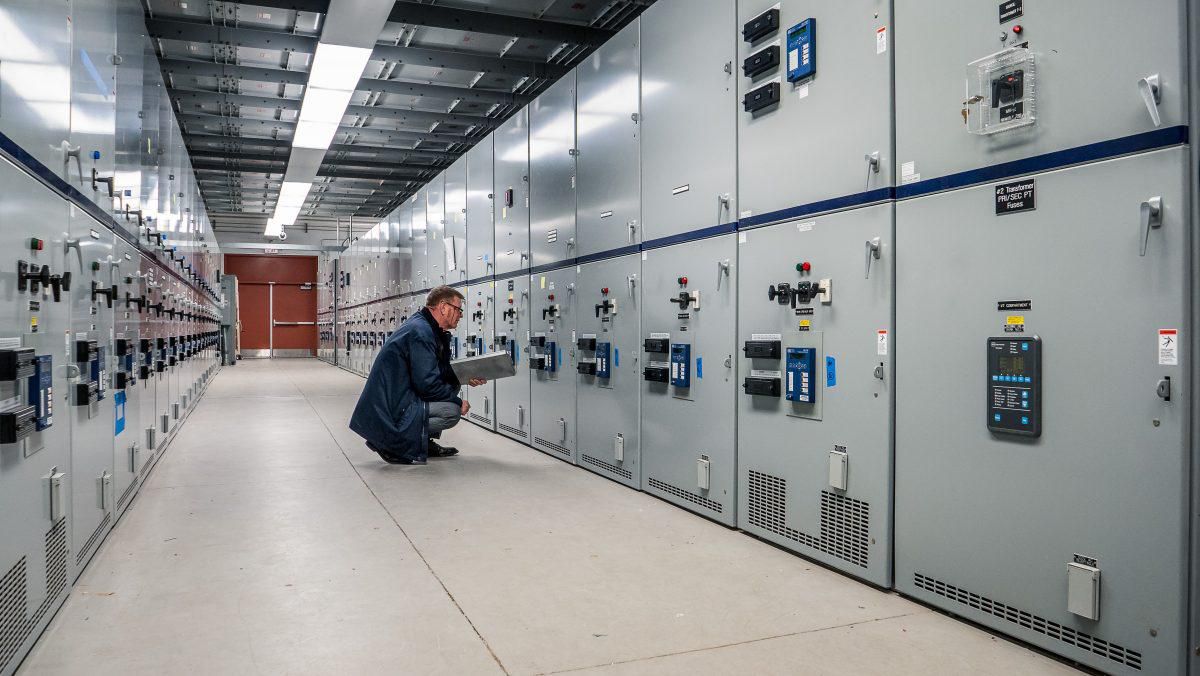A centralized power source can create issues when it unexpectedly goes offline. When an outage occured at Montclair State University’s (MSU), their state-of-the-art microgrid kicked in and isolated the University from the main grid, fired up its generators, and seamlessly powered the entire campus for nine hours. MSU became an island!
The transition was so seamless that no one in New Jersey’s second-largest university realized that the energy being provided was produced just below their feet. Vice President for University Facilities Shawn Connolly explained:
“No one knew we were in island mode, until my phone told me. That was the first time I ever got that message for a real situation.”

Grid Dynamics
It was a triumphant success for the microgrid, having only been installed for a month before its impromptu real-world test. Consisting of a 5.4-megawatt natural gas turbine with enough power to power 4,300 homes, the university’s microgrid also incorporates boilers and chillers capable of providing both efficient heating and air-conditioning.
MSU’s grid boasts additional measures set to boost its resilience. It can run indefinitely on natural gas and more than four days on fuel oil, ensuring its role as an autonomous power source in case the power grid fails.
The need for such a microgrid arose after Hurricane Sandy devastated the United States’ northeastern seaboard in 2012. Much of New Jersey’s electrical infrastructure was destroyed and disruptions meant Montclair State was unable to function for a week. This led to MSU’s decision to upgrade its backup power generation capabilities to become more resilient and ensure the university would be functional no matter what.
Globally, microgrids are becoming an increasingly popular energy option. These scaled-down, versions of standard electrical grids incorporate local energy sources and reduce reliance on larger utility companies while promoting efficient low-carbon energy production.
Micro and mini grids are already revolutionizing electrification efforts in Africa and the Pacific, while also providing a low-cost alternative for consumers in major cities. Microgrid projects are creating the blueprints for wide-spread implementation in developing nations but also as a primary backup system for densely populated centers reliant on conventional power grids and utility companies.
Efficient Economics
The University’s microgrid provides more than just energy security and resilience – the grid has saved the university over US$4 million in energy costs since its implementation. MSU’s microgrid controls and manages its energy use based on real-time pricing – much like the large-scale Tesla battery that constitutes South Australia’s Hornsdale Power Reserve.
The back-up system in South Australia revolutionized the state’s electrical grid in a similar way to MSU. Faced with major blackouts as a result of severe storm events South Australia was searching for a reliable, resilient back-up electrical system. Tesla answered the call and delivered a 100MW battery of kicking in within a fraction of a second which has saved the state from plunging into darkness on more than one occasion.
Both Tesla and MSU’s grids have been able to profit off their energy generation and storage by making the best economical choices. When prices are low they can rely on the main grid, but they are able to sell power back to the operator during peak demand. Exporting power back to the main energy grid ensures that the University capitalizes on its microgrid’s efficiency, but this also makes it a low-carbon, environmentally-friendly power source for the grid’s main power provider Public Service Electric & Gas Co. (PSE&G).

Dave Daly President and Chief Operating Officer of PSE&G illustrates:
“Montclair State’s microgrid is an excellent use of innovative technology to help the university manage their energy use more efficiently. Their system integrates seamlessly with PSE&G’s electric grid and is a positive step toward a more cost-effective energy future.”
Microgrids are already powering a revolution in the global south, its role at MSU emphasizes the versatility and potential behind their implementation in major hubs – they are the next step in urban development. From reducing carbon emissions to decentralizing energy production and increasing the resilience of local areas, microgrids provide a myriad of complimentary services. Montclair State University is promoting efficient energy production and usage while creating a blueprint for the use of microgrids. Innovation has often been linked to islands, and MSU’s microgrid island is just that – innovation in action.


